Better Sailing


Sailboat Maintenance Checklist
Whether your sailboat is stationary for a long time, or whether you live and travel with it, there are several key things to keep an eye on. Regular maintenance of your sailboat will ensure more years of use and better performance. Furthermore, your sailboat will be safer and it will keep its value longer. Below you’ll find a checklist for routine mission-critical checks. Some of these checks have to be performed both daily and monthly. Others require monthly and annual checks, but always make sure to inspect everything, thoroughly. Follow the steps of the list and ensure trouble-free sailing.
The engine of your sailboat is something that requires a lot of care and attention. Inspect regularly the condition of the engine and look for corrosion, as well as make sure that the outboard motor is securely in place. Daily maintenance of the engine consists of:
- Check the engine’s oil level.
- Check the belt tension.
- Transmission fluid level.
- Inspect pulleys as well as the alignment.
- Alternator and water pump belts have to be tight.
And now we’re moving on to the monthly maintenance of the engine which includes:
- Change the oil and filter of the engine.
- Clean the thru-hull.
- Clean the siphon break.
- Fill up coolant and antifreeze if needed.
- Check pump, impeller, and raw water strainer.
Finally, let’s see the annual maintenance of your sailboat’s engine:
- Test the batteries.
- Check the diesel tank for damages.
- Inspect the shaft and propeller.
- Change primary and secondary fuel filters.
- Bleed the fuel system.
Check the Bilge and Bilge Pump
The bilge is situated at the bottom part of the sailboat and collects excess water. The bilge pump is the piece that removes water from the bilge. If the bilge pump is damaged, your sailboat can even be sunk! In order to keep yourself and your boat safe, check the pump hoses for debris that could cause clogs. In case you find a leak, the first thing you should do is to taste the water. Is it freshwater or saltwater? So, every few days survey the bilge for oil, water, or fuel leaks. Moreover, it’s important to lift a central floorboard often just to ensure that the bilge is dry. Leaks can be caused by different areas. For instance, leaks that come from holes in the deck, loose hatch seals, or improperly sealed windows.

>>Also Read: Common Sailboat Problems and How to Fix Them
Always inspect probable damages to your sailboat, even if it’s in a well-maintained condition. It’s recommended to make monthly and yearly checks to make sure it stays in perfect condition. Firstly, inspect the hull, keel, and rudder and look for any damages, cracks, and blisters. Then, make sure that the drain plugs are in place. Apply gel coat restorer or a rust inhibitor to the scratches or to the rusting of your sailboat’s bodywork. Moreover, you will also need to remove your sailboat from the water, once a year. It’s easier to do this during the winter months and although this can be a costly thing to do, is really worth it. Like this, you’ll get a better image of the hull’s condition and fix anything that needs repair. Finally, remember to annually carry out anti-fouling and any re-painting or zinc replacement.
Raw Water Strainers and Freshwater Levels
Don’t forget to check your seas strainers! If you’re running your generator, heat/air conditioning, or anything that requires saltwater or raw cooling system to function, you might want to surveil your strainers. Furthermore, inspect the water flow on all of the raw water cooling systems. You have to see an easy flow of heating, Genset, refrigeration, and aircon cooling water out of the system. If the freshwater system, which is pressurized by an accumulator tank gets too low, then it throws the whole system out and thus it will not be working properly. So, it’s imperative that you never let your water tanks empty.
As for the electrical system it is recommended to check it every month. Check the condition of the wires, if they’re neatly secured, dry, and inspect their casings to see if they are intact. However, there are some sailboats that have their generator running periodically to charge them up. So, keep an eye on your battery’s charge levels. Also, the electrical lines must be in good condition to keep the electrical system on your sailboat up and running. Any damaged lines could provoke a fire hazard. To prevent electrical lines from erosion, remember to keep them clean, and use a digital multimeter to make sure everything’s working properly.
Without the battery, which is the heart of your sailboat, the engine won’t start, nor the electrical components will work. So, take good care of the battery and check it once a year, or more often, i.e. during the boating season. Keep in mind that batteries naturally degrade over time, so this is a must task to perform. You can check the battery’s charge with a digital multimeter, and the connections for corrosion. Moreover, test the batteries and check if they’re clean and dry. There are sailboats that have solar and wind power that continuously tops up the batteries. Other sailboats depend on having the generator running periodically in order to charge them up.
In case you’re running the generator you will need to check its vitals at least once a week. So, check the oil, belt, water level, and inspect for leaks and loose connections. You can see the leaks easier if you keep the Genset clean.
Oil and Filter
Remember to regularly change the oil and oil filter. In case you don’t, then it is possible to provoke damage to the engine parts. In order to change the oil, let the engine run for about seven minutes, then turn it off. Subsequently, place a container under the drain plug. Take out the drain plug and loosen the screw that is located above. Then, let the oil drain out for about 30 minutes. During this process change also the oil filter. After the oil drains out, replace the drain plug and tighten the screw. Finally, fill the engine with the proper oil.
Fridge and Freezer Temperature
The effectiveness of a fridge often depends on the temperature of the sea. Many boat refrigeration systems get a charge over time which makes them less effective. Therefore they slowly reduce the temperature gauge. So, it is recommended to change the temperature gauge at least once a week. The temperature of the fridge has to be below 5 degrees and the freezer below freezing.
Sails and Rigging
Sails and rigging have to be checked at least once a month. Firstly, look out for any chaffing where the headsail sheets attach to the clew, and also to the traveller and boom vang. Secondly, examine thoroughly if there’s any wear on the mainsail. Then, check if the cotter pins and shroud are in place and in good condition. Finally, make sure that the turnbuckles and pelican hooks on the lifeline are in good condition.
Summary- Maintenance List
Your sailboat’s maintenance needs to be taken seriously. When you’re regularly maintaining your sailboat, you also ensure its life spanning. Some basic items that require constant maintenance are the generator, the battery, the plumbing, the bilge, oil, and the fridge and fluid levels, among others. However, there are others that require monthly or yearly maintenance, such as the engine, the electrical system, the sails and rigging, the propeller, zippers, hinges, upholstery, etc. In case you can’t repair or check the condition of these parts, then consider contacting a professional to help you with the maintenance process.
Peter is the editor of Better Sailing. He has sailed for countless hours and has maintained his own boats and sailboats for years. After years of trial and error, he decided to start this website to share the knowledge.
Related Posts

Atlantic vs Pacific: Which is More Dangerous for Sailing?

Why Do Sailboats Lean?

How Does a Boat Sail Upwind? Unveiling the Mechanics of Against the Wind Sailing

How Does Sailing Work? The Physics of Sailing
- Buyer's Guide
- Destinations
- Maintenance
- Sailing Info
Hit enter to search or ESC to close.

- Accessories
- Caulk & Sealants
- Restoration
- Rubbing Compounds,Polishes & Waxes
- Solvents & Removers
- Teak Maintenance
- Where to Buy

- Spec Sheets
- Safety Data Sheets
January Special until January 31st: 25% off all products. Use Code JAN25 at checkout. *restrictions apply
Free ground shipping in the Continental US for any orders over $150!
The Ultimate Sailboat Maintenance Checklist...
The ultimate sailboat maintenance checklist.

Pop quiz: when are you finished with maintenance on your sailboat? It’s a trick question. The real answer is “never,” because a sailboat needs regular care and attention if it’s going to perform at its best. And that care and attention won’t help if it isn’t comprehensive. That’s why we’ve put together this ultimate sailboat maintenance checklist to help keep your ship in top condition:
- Inspect the boat. Survey the bilge, for example. Test the bilge pump and make sure it runs smoothly. Visually inspect the hull. Look for leaks. Check the raw water sea strainers and look at your battery levels on a regular basis. The key word here is “comprehensive.” Remember, without a comprehensive inspection, you won’t know which issues need addressing.
- Inspect your anchorage. Keeping an anchor in proper condition is essential. You don’t want to head out on a journey and find out that your anchor is suddenly flawed. Some experts recommend waiting for clear waters and weather and diving down to check the anchor itself.
- When in doubt, get a second opinion. If you’re not sure about the quality of a particular system, you should bring in an extra pair of eyes—preferably an expert’s pair of eyes. It’s better to know that your sailboat doesn’t have a problem than to wonder.
- Write down your regular maintenance habits. Add a date next to your notes so you know what needs to be done first. You’d be amazed at how much time can pass since you inspect a critical system if you don’t track it. By tracking it, you’ll know which spots on your sailboat deserve the most attention next time around.
- Look at the quality of your sailboat’s wood. A sailboat’s wood is comparable to its lifeblood. You don’t want dry rot to set in and completely change its quality. We recommend a range of Wood Restorers that can help you out here if a total replacement is not needed. Our Git-Rot Kit is particularly helpful. It uses capillary action to penetrate through wood rot and strengthen the wood to make it both sandable and paintable.
- Keep it clean! If there’s one thing inexperienced boat owners often forget, it’s that keeping a clean boat can work wonders. Keeping your sailboat clean will help prevent mildew from developing, which in turn ensures that you don’t end up with a lot of strange odors that become hard to eradicate. We have a full range of Boat Cleaning Products here at BoatLIFE for you to peruse.
- Address maintenance issues as soon as they arise. Don’t put a new issue, such as a strange noise, on the back-burner. You don’t want to find out about a new problem when you’re out on the water. You want to know everything there is to know when you’re safe at home.
Stock Up On Boat Maintenance Products
There is a lot you can do to maintain a high-quality, sea-worthy sailboat—and you’ve read a lot of it here. Make sure to expand your boat maintenance toolkit with our boating products here at BoatLIFE.
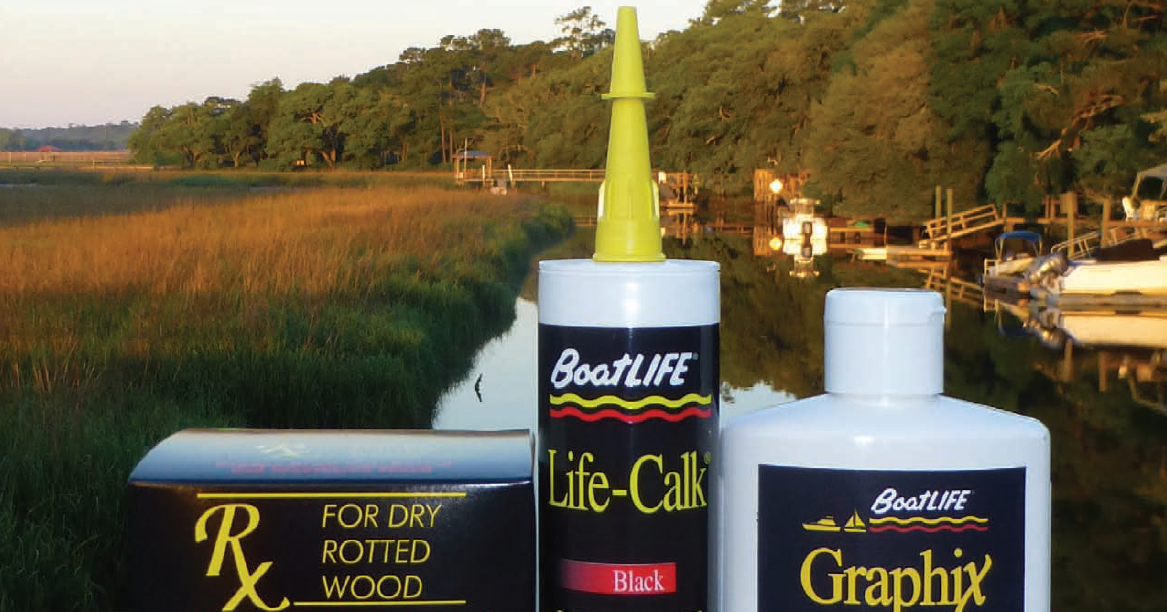
Share this:
- Click to share on Twitter (Opens in new window)
- Click to share on Facebook (Opens in new window)
Featured Products
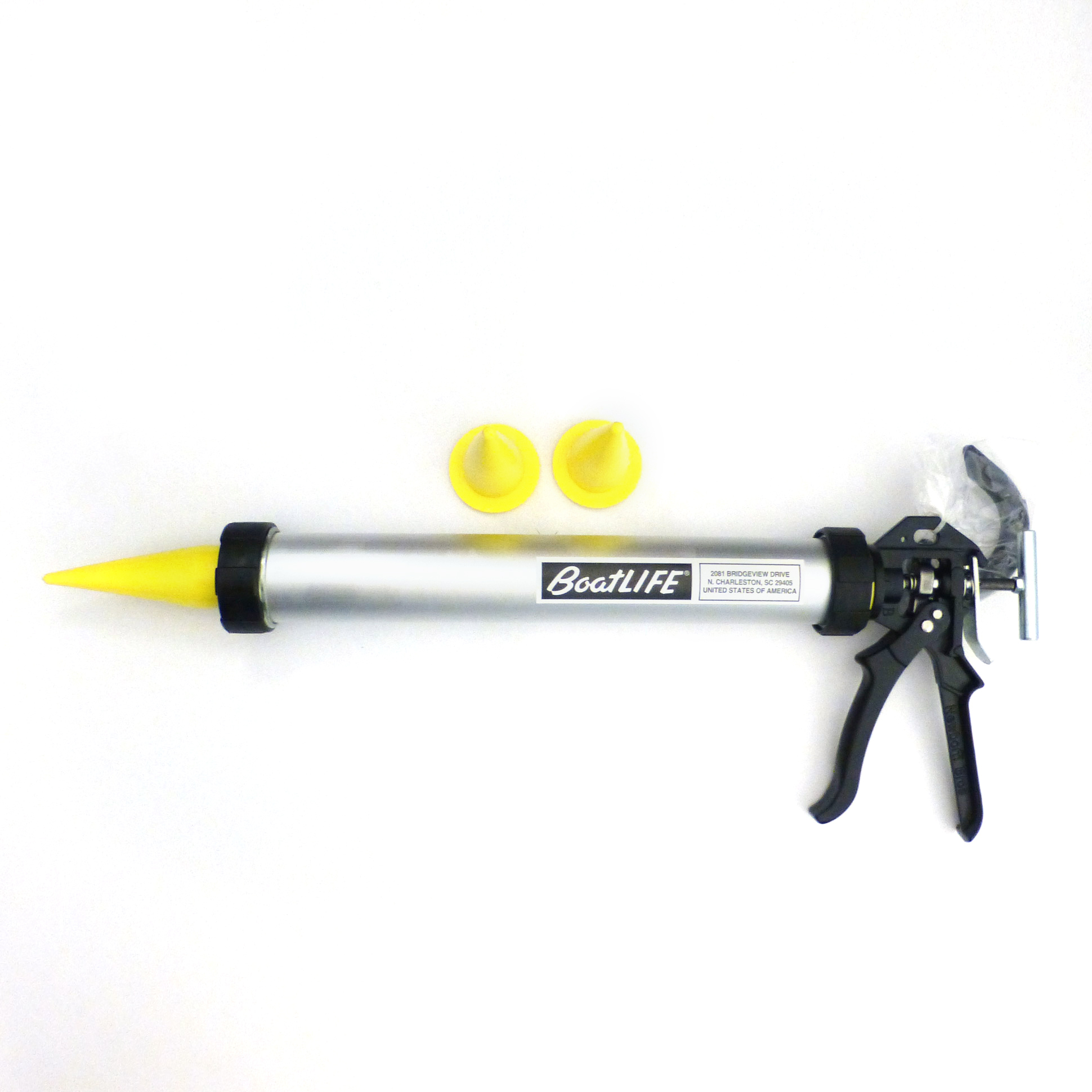
Liquid LifeSeal® Sealant 5.2 fl. oz. Clear
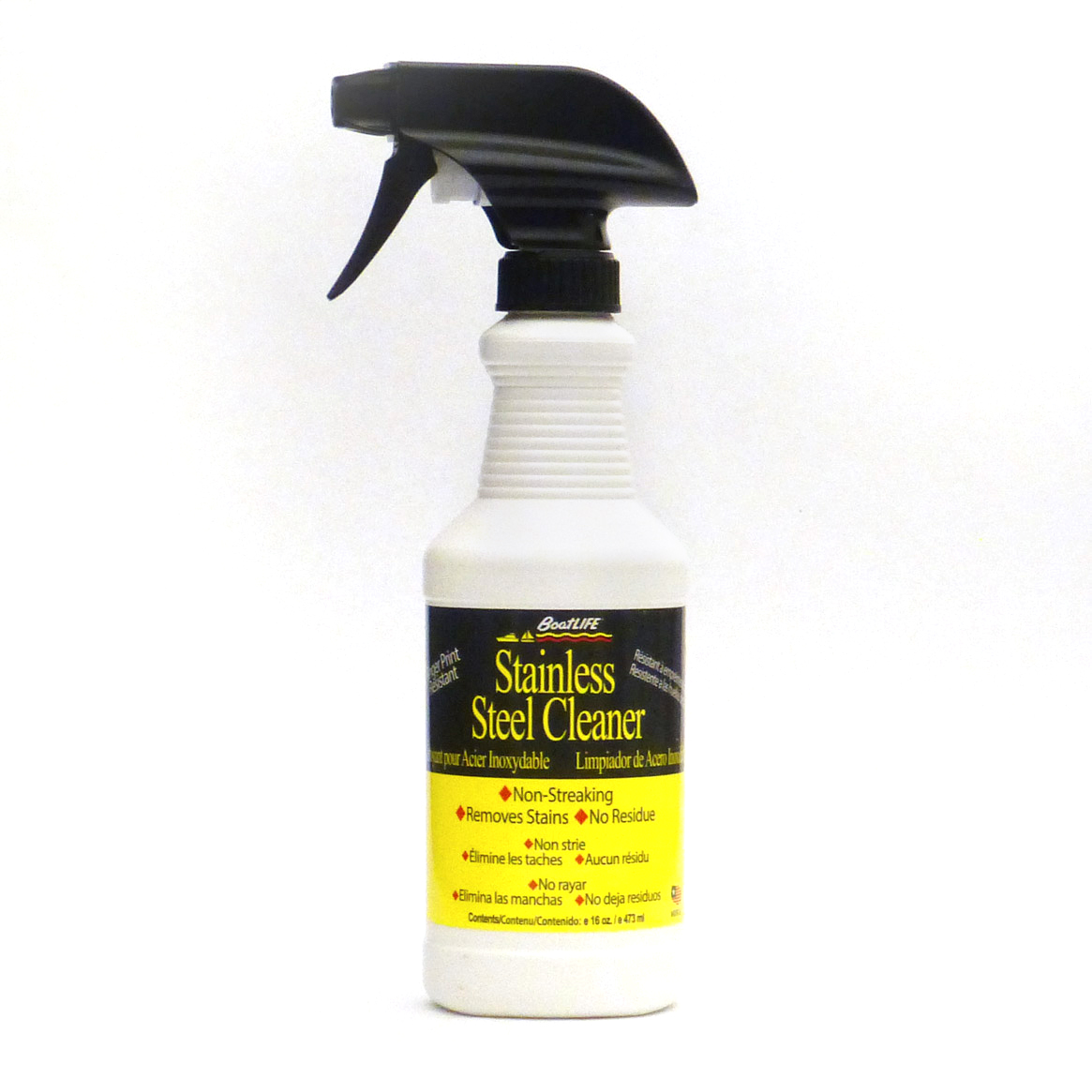
Stainless Steel Cleaner 16 fl. oz.
Related blogs, join boatlife at ibex 2024.
Calling all marine trade professionals attending IBEX at the Tampa Convention Center in Tampa, Florida October 1-3, 2024! We’d love […]
UPDATED How to Use “Git”-Rot
**This is an update to a previous post, “How to Use “Git”-Rot””. The presence of wood rot can ruin any […]
Thanksgiving Trivia!
Happy Thanksgiving! Thanksgiving is one of America’s oldest and most loved holidays. Although the story is steeped in a dark […]
All products proudly made in the usa

8 Sailboat Maintenance Tips: How to Maintain Your Sailboat
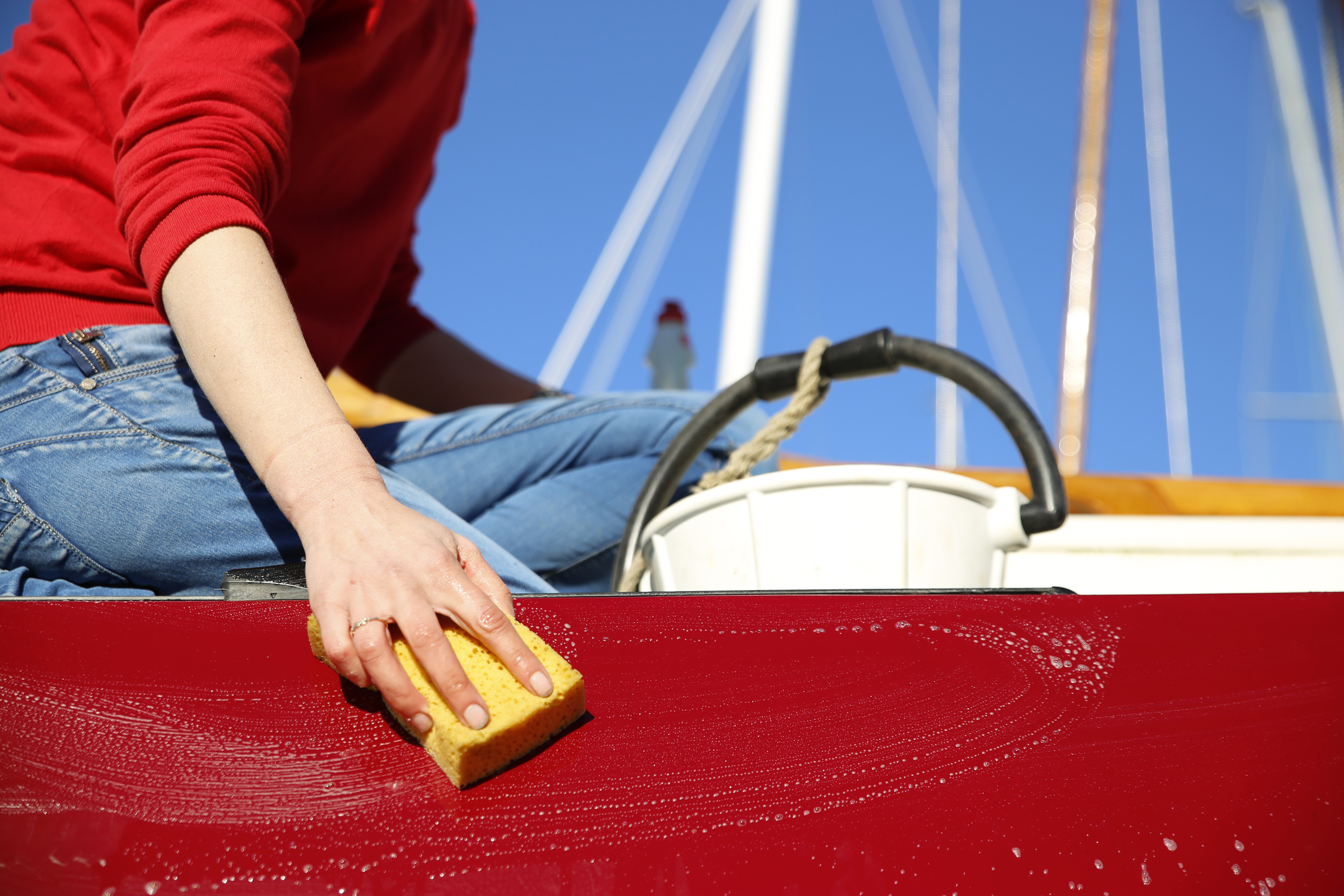
Sailing is a breeze once you've got the hang of it! And with just a little know-how, you can use the power of the wind to venture out on thrilling outdoor adventures.
But what happens when you're not just the sailor but also the owner? It's a whole different ballgame. And sailboat maintenance can be overwhelming for many boaters. But don't worry; this sailboat maintenance guide will explain everything you need to know.
The Essential Sailboat Maintenance Checklist
To keep your boat in top shape, follow this sailboat maintenance checklist to ensure maximum performance and longevity.
1. Inspect the Overall Boat Structure
First, it's a good idea to inspect the boat thoroughly and ensure everything is in shipshape. It's wise to check the hull for any visible damage at least once a year or every few months. Look for any signs of problems like leaks, cracks, paint issues, scratches, or weak areas.
If you spot any red flags, it's wise to seek advice from a professional to ensure there are no hidden issues. (It's always wise to err on the side of caution!) And make sure to check your bilge weekly for any water, oil, or fuel leaks. It's critical to stay on top of maintenance.
And finally, pay attention to the other essential parts of your boat, like the mast and steering system. Visually inspect all the different components that keep it sailing smoothly.
Read Next: Sailing Safety Guide
2. Keep a Record of All Sailboat Maintenance
If you haven't already, keeping a notebook with records every time you inspect your boat is a good idea. It'll come in handy! You'll be able to keep tabs on what's effective, what needs replacing, and what's working now but might need repairs in the future.
3. Test Equipment
After completing the visual check, verifying that the bilge pump is in automatic mode and operating smoothly is essential. And remember to check the raw water cooling systems and inspect the sea strainers. During this time, you'll want to empty any strainers and ensure the water flows smoothly out of the boat.
4. Check The Anchor and Chain
When it comes to sailboat maintenance, checking your anchor underwater may not be the most exciting task, but it's necessary every once in a while. However, make sure to wait for clear waters before diving in!
Below the waterline, check the anchor and chain's condition to ensure nothing unusual is happening. Because now and then, the chain gets all twisted up, or the anchor decides to take a little detour.
5. Charge Your Batteries
Additionally, remember to check the battery levels during your sailboat maintenance checklist. Ideally, sailors would check any batteries daily. You'll thank yourself later for taking precautions to ensure those batteries won't die, especially mid-voyage!
6. Test the Rigging
Take the time to check your rigging at least once a season. It's important! Pull the mast down, inspect it, and run a quick test. Check for signs of weakness or decay and any broken strands or corrosion patterns. That should do the trick.
7. Clean and Photograph Sails
One of the most essential parts of your boat is the sails . Remember to rinse sails with fresh water regularly and dry them thoroughly before storing them. Washing them allows you to inspect for visible signs of wear and tear.
Additionally, make a point of photographing your sails while cleaning! It's an excellent way to keep track of your sailboat maintenance efforts and stay organized. Plus, visual benchmarks can help monitor the status of any boat part over time.
8. Regularly Clean During Sailboat Maintenance
Lastly, keeping a clean vessel is crucial to sailboat maintenance. And it helps ensure everything is functioning perfectly.
Regular cleaning also prevents the buildup of mildew, salt, dirt, and corrosion, which can cause various issues. Stick with biodegradable boat soap and cleaning products specifically designed for water use for optimal results.
Sailboat Maintenance Costs
Like any vessel, ownership comes with more costs than the initial price tag. Fortunately, your sailboat is a cost-effective and low-maintenance alternative to a powerboat of the same size. (Fuel is on the house!)
The average annual sailboat maintenance costs fall somewhere between $2,000 to $5,000. Boat maintenance costs are often around 10% of the purchase price. Naturally, larger boats require more maintenance, and fancier amenities come at a higher cost.
Read Next: Costs of Boat Ownership

Ready to Cast Off? Don't Forget This Sailboat Maintenance Checklist
Hopefully, this overview has provided a clear understanding of the essential aspects of routine sailboat maintenance. When you don't want to do maintenance on your sailboat , remember that the more you keep it clean and preserved, the longer it will last. And it'll work like a pro!

Join Our Newsletter!
Get community news, buying bargains, and how-to guides at your fingertips.
Yachting Monthly
- Digital edition

Boat maintenance: the 55-point skipper’s checklist
- Katy Stickland
- April 27, 2021
The ultimate boat maintenance checklist to make sure your yacht is ready for launch and the start of the sailing season

Check your rudder for hairline cracks or damage
Boat maintenance: Mast & Rigging

Check all your standing rigging connections. Credit: Colin Work
- The mast cap is out of sight, out of mind 99% of the time, but serves multiple functions: backstay, forestay, cap shrouds, radio antenna, nav lights, halyard sheaves. Rotate mast and boom sheaves to check they are not misaligned or worn by a bad halyard lead. Lubricate sheaves with WD40 or silicone grease.
- Spreaders, gooseneck, mast heel, kicker, mainsheet and topping lift connections all need checking for wear, damage or corrosion.
- Check for galvanic corrosion between different metals.
- Check electrical connections, deck and spreader lights.
- Wax mast tracks and luff grooves with candle wax or Teflon spray.
- Standing rigging: Look for areas of wear or stranding on the wire. Check mast tangs, T-ball joints and rigging screws.
- Wash furling drum and swivel and check they move freely. It’s common for the top swivels to become stiff and sometimes seize, which can compromise the forestay wire.
- Running rigging: check for chafe and that the shackles aren’t seized. Sheets, halyards, warps: wash in fresh water to get rid of salt and grime.
- Deck winches : strip down, wash parts in paraffin, wash off with soapy water and lightly regrease .
- Windlass : if manual, check it’s working, clean and tighten. For powered versions check foot switch for water, clean and use Vaseline on the connections.
- Anchor chain : Re-mark lengths if faded, or add chain markers. Check for condition and wear.
Head, bilge & gas

Check bilge pumps it might sound ok but is it actually attached to a hose?
- Check impeller on bilge pumps and grease with water pump grease only (Vaseline will rot impellers)
- If you have an automatic bilge pump, check float switches work.
- Dry bilges thoroughly then if water appears after relaunch you’ll know you’ve got a leak.
- Fill water tank and add purifier such as Puriclean or Milton
- If the pump on the heads is stiff look to service and lubricate with silicon grease.
- If you have a gas sensor, check it works.
Boat maintenance: Below waterline
Hull and skin fittings.

Check jubilee clips for rust. Credit: Bob Aylott
- Most vessels have DZR (dezincification-resistant brass) seacocks. Look for any signs of corrosion on the skin and tail joints, which are common points of failure.
- Ensure all valves are greased.
- All hoses should be double-clipped. Check jubilee clips for rust . Do you have wooden plugs attached in case of emergency?
- Check skin fittings are free of blockages/ growth or antifouling.
- Check anodes have plenty of life . Don’t forget prop shaft and saildrive anodes.
- Check leading, trailing and lower sections for damage or hairline cracks.
- Check for play in bearings, stock or quadrant. Movement should be minimal. Grease steering cable.
- Check for stress cracks or movement internally and externally – especially at the keel root and around the internal framing or matrix, and around fastenings and backing washers.
Prop shaft & stern gland
- To check bearings, grasp prop in both hands and try moving it up and down and from side to side. There should be little, if any, movement – no more than 2mm.
- Check P-bracket for stress cracking from misalignment or damage.
- Stern gland packing. Many yachts have some form of deep-seal arrangement that has a service life of around seven years. Those that have a proper stuffing gland will need to be greased to prevent drying out and getting brittle. The gland may need pulling down or repacking at some point.
- If you have a saildrive, check the condition of the seal and the metal ring that holds it in position. Again, note the seals have a life expectancy of between five and seven years depending on manufacture.
Boat maintenance: Mechanics

Check all filters
- If you didn’t change the oil when you laid up, change it now.
- Change fuel filters.
- Remove rags stuffed in outlet pipes from winterisation.
- Impellers – if removed at lay-up – reinstall with a smear of water pump grease.
- Reinstall the engine belts and check tension: there should be no more than half an inch of play.
- Check oil levels. Check durability of the gaiter seal. Check rubber faring and reseal if necessary.
- Change internal engine anode.
- Check engine mount is secure.
- Check diesel tank for water from condensation . Drain off or replace fuel. Add an appropriate biocide to help kill off diesel bug .
- Check inaccessible wiring, such as bonding wires from the anode and earthing wires from the starter motor. Clean the terminals and smear them with Vaseline or silicone gel.
Batteries and electrical systems
- Check electrolyte level if yours is an open lead acid battery; tighten battery securing straps and make sure vent for gases is clear. Clean terminals and coat with Vaseline. For sealed batteries, check the condition of indicator light, or other charge indicator.
- Switch on instruments and use backlighting to help reduce any condensation.
- If the anode looks serviceable for another season, check bonding and wires. If they haven’t worn at all they may not be working so check Ohm resistance max 0.2 from propeller to anode.
- Check for chafe, wayward stitching and tears. Do you carry a sail repair kit?
- Take to a sailmaker if the sacrificial strips is worn out.

Make sure your navigation apps are up to date
- Update charts from Notice to Mariners .
- For electronic charts, check with your supplier how to update. New chartplotters can connect to WiFi, or you may need to connect the chart chip to your PC at home and download the update.
- Download operating software updates for your chartplotter and instruments.
- Make sure your subscriptions for navigation apps on phone and tablets are up to date with the latest charts.
- Check age of hoses. If they are over five years old, they should be replaced. Check for kinking or wear in gas hosepipes. If in doubt, replace.
- Check hose clips are tight. Hoses behind cookers should be armoured.
- Check thermal cut outs on hob, grill and oven work.
Harness/lifelines
- Check stitching and get repairs done by a sailmaker if necessary.
- Jackstay and Danbuoy lines: check condition and points of security.
- If you have the traditional type, check the bulb, battery and that it actually works. The new types have various ways of testing, and all have an expiry date.
Lifejackets

Is your lifejacket fit for purpose and in good condition? Credit: Theo Stocker
- Inflate using mouth tube. Leave inflated overnight to check for leaks .
- Wash with fresh water
- Weigh cylinder and check lights if fitted.
Stanchions/lifelines
- Check stanchions and make sure lifelines are still suitably secured at each end and cords and pins are in good order.
- Watch out for wire failing if you have plastic sheathing.
- Make sure these are in date, in a watertight container and are easy to reach. It’s worth having gloves and goggles to hand too.
- Make sure these are in date and registered with the correct contact details.
- Ensure this and the hydrostastic release are within the service date, and you are aware of its contents .
- If its secured with a rope, consider if you could release it in an emergency with ease.
- Make a grab bag up with essentials
Enjoyed reading Boat maintenance: the 55-point skipper’s checklist?
A subscription to Yachting Monthly magazine costs around 40% less than the cover price .
Print and digital editions are available through Magazines Direct – where you can also find the latest deals .
YM is packed with information to help you get the most from your time on the water.
- Take your seamanship to the next level with tips, advice and skills from our experts
- Impartial in-depth reviews of the latest yachts and equipment
- Cruising guides to help you reach those dream destinations
Follow us on Facebook , Twitter and Instagram.
- Yacht World
- Sailboat Guide
- Luxury Yachts
- Sailing Tips

Sailboat Maintenance Checklist | A Step-by-Step Guide
How Much Is a Mini Jet Boat A Comprehensive Guide to Prices and Features
How to buy a used sailboat a step-by-step guide, how much fuel does a yacht use per hour a comprehensive guide, mastercraft x-star 2015 the ultimate luxury pontoon boat.
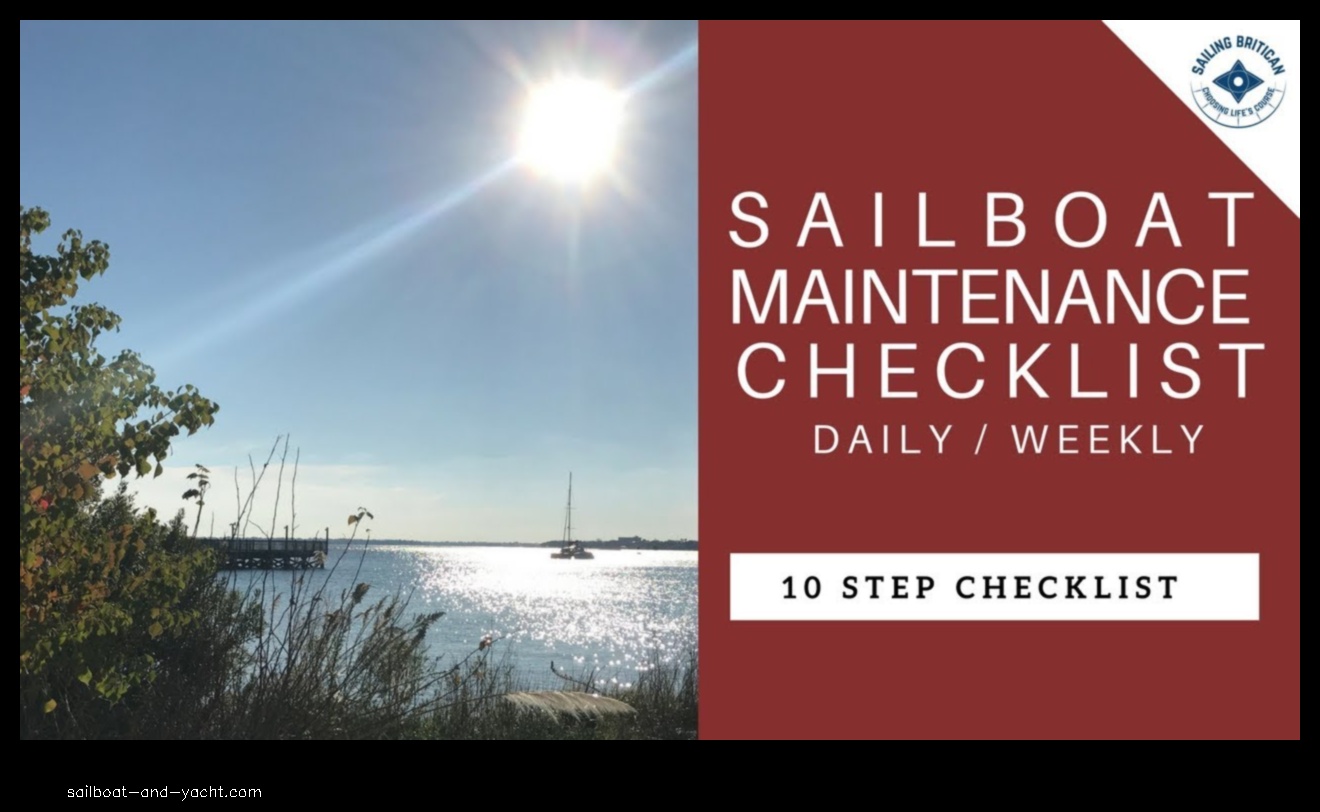
Sailboat maintenance checklist provides a comprehensive overview of the essential maintenance tasks that should be performed on a sailboat on a regular basis. The tasks are organized by system, and each task includes a description, the frequency with which it should be performed, and any tools or materials that are required.
Hull Maintenance
The hull of a sailboat is one of the most important systems to maintain, as it protects the boat from the elements. The following tasks should be performed on a regular basis to keep the hull in good condition:
Hull maintenance is essential for keeping your sailboat in good condition. A well-maintained hull will be more seaworthy, perform better, and last longer.
Here are some tips for hull maintenance:
- Wash your hull regularly with a mild detergent and water.
- Inspect your hull for any damage, such as cracks, blisters, or leaks.
- Patch any damage to your hull as soon as possible.
- Apply a coat of anti-fouling paint to your hull to prevent the growth of barnacles and other marine growth.
- Keep your hull waxed to protect it from the sun’s UV rays.
- Wash the hull with a mild detergent and water.
- Inspect the hull for any signs of damage, such as cracks, blisters, or leaks.
- Apply a coat of anti-fouling paint to the bottom of the hull.
By following these tips, you can help keep your sailboat’s hull in good condition and extend its lifespan.
Sail Maintenance
The sails of a sailboat are another important system to maintain, as they provide the power to propel the boat. The following tasks should be performed on a regular basis to keep the sails in good condition:
- Wash the sails with a mild detergent and water.
- Inspect the sails for any signs of damage, such as tears, rips, or holes.
- Repair any damage to the sails.
- Apply a coat of sail sealant to the sails to protect them from the elements.
Rigging Maintenance
The rigging of a sailboat is the system of ropes and cables that connects the sails to the mast and boom. The following tasks should be performed on a regular basis to keep the rigging in good condition:
- Inspect the rigging for any signs of damage, such as fraying, kinks, or corrosion.
- Tighten the rigging as needed.
- Replace any damaged rigging.
Engine Maintenance
If your sailboat has an engine, it is important to keep it in good condition by performing regular maintenance. The following tasks should be performed on a regular basis to keep the engine in good condition:
- Change the oil and filter.
- Check the spark plugs and replace them as needed.
- Check the belts and hoses and replace them as needed.
- Inspect the engine for any signs of leaks or damage.
Electrical Systems Maintenance
The electrical systems of a sailboat are essential for powering the lights, navigation equipment, and other electrical devices. The following tasks should be performed on a regular basis to keep the electrical systems in good condition:
- Inspect the wiring for any signs of damage or corrosion.
- Replace any damaged wiring.
- Check the batteries and replace them as needed.
- Inspect the fuses and replace them as needed.
Ventilation and Bilge Maintenance
The ventilation and bilge of a sailboat are important for keeping the boat dry and free of mold and mildew. The following tasks should be performed on a regular basis to keep the ventilation and bilge in good condition:
- Inspect the ventilation system for any signs of blockage.
- Clean the bilge regularly to remove any water or debris.
- Check the bilge pumps and make sure they are working properly.
Deck Maintenance
The deck of a sailboat is one of the most visible areas of the boat, and it is important to keep it clean and well-maintained. The following tasks should be performed on a regular basis to keep the deck in good condition:
- Wash the deck with a mild detergent and water.
- Inspect the deck for any signs of damage, such as cracks, chips, or scratches.
- Repair any damage to the deck.
| Maintenances | Descriptions |
|---|---|
| Sailboat Maintenance Checklist | A list of tasks that should be completed to maintain a sailboat. |
| Sailboat Maintenance Tips | Advice on how to perform each task on the sailboat maintenance checklist. |
| Sailboat Maintenance Schedule | A schedule for when each task on the sailboat maintenance checklist should be completed. |
| Sailboat Maintenance Costs | An estimate of the cost of each task on the sailboat maintenance checklist. |
| Sailboat Maintenance Tools | A list of tools that are needed to complete the tasks on the sailboat maintenance checklist. |
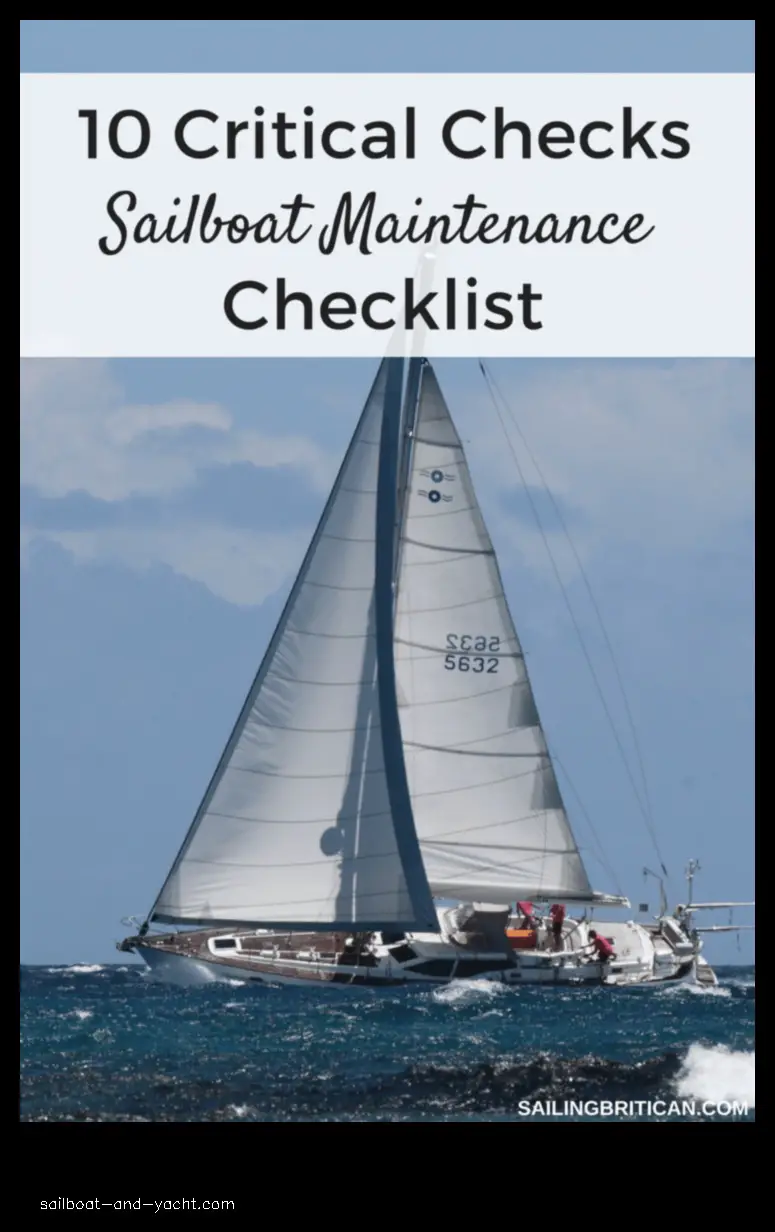
III. Sail Maintenance
Sail maintenance is essential to keep your sails in good condition and performing at their best. By following a regular maintenance schedule, you can help to extend the life of your sails and prevent costly repairs.
Here are some tips for sail maintenance:
- Wash your sails regularly with a mild detergent and water.
- Inspect your sails for tears, holes, or other damage and repair them as soon as possible.
- Store your sails in a cool, dry place when not in use.
- Avoid exposing your sails to direct sunlight, which can damage the fabric.
- If you notice any signs of mildew or mold on your sails, clean them with a mildewcide or bleach solution.
By following these tips, you can help to keep your sails in good condition and extend their life.
IV. Hull Maintenance
The hull of a sailboat is one of the most important parts of the boat, and it is important to maintain it properly in order to keep it in good condition. Hull maintenance typically includes cleaning the hull, inspecting the hull for damage, and applying a coat of anti-fouling paint.
To clean the hull, you will need a soft brush, a bucket of water, and a mild detergent. Rinse the hull with fresh water before and after cleaning. Be careful not to use a brush that is too abrasive, as this could damage the hull.
Inspect the hull for damage, such as cracks, blisters, or leaks. If you find any damage, you will need to repair it before applying a coat of anti-fouling paint.
Anti-fouling paint is a paint that is applied to the hull of a boat to prevent the growth of barnacles and other marine growth. It is important to apply a coat of anti-fouling paint every year or two, depending on the type of paint you use.
Hull maintenance is an important part of keeping your sailboat in good condition. By following these tips, you can help to extend the life of your boat and keep it looking its best.
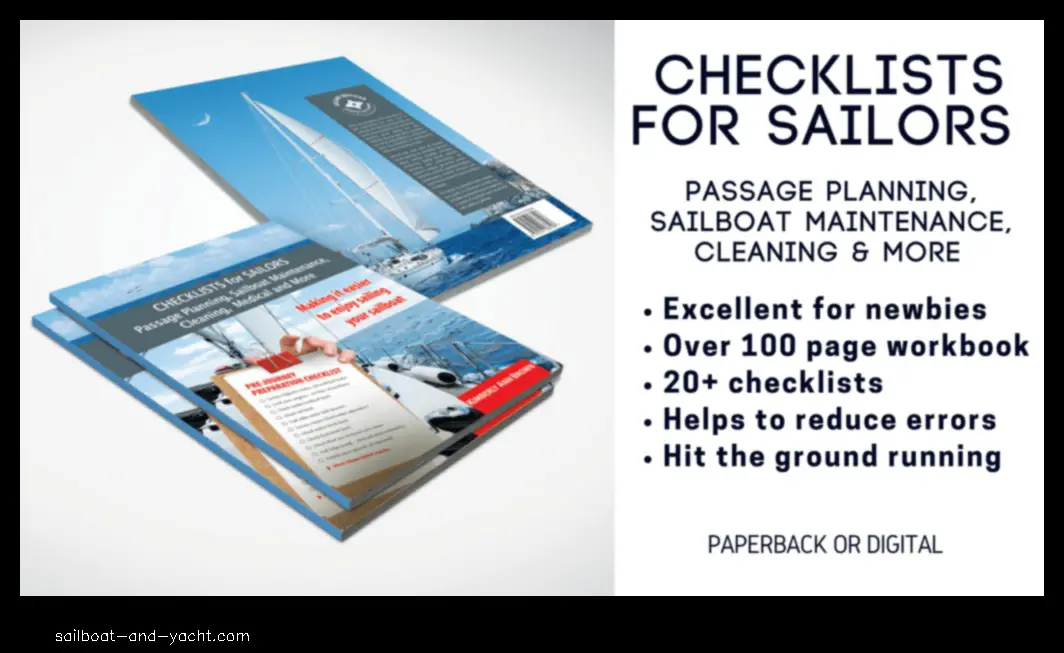
V. Engine Maintenance
Engine maintenance is essential for keeping your sailboat running smoothly and safely. Here are a few tips for maintaining your engine:
- Check the oil level regularly and add oil as needed.
- Change the oil and filter according to the manufacturer’s recommendations.
- Check the coolant level regularly and add coolant as needed.
- Flush the cooling system and replace the coolant every year or two.
- Inspect the belts and hoses regularly and replace them as needed.
- Clean the air filter regularly.
- Have your engine serviced by a qualified technician at least once a year.
By following these tips, you can help keep your engine running smoothly and safely for many years to come.
VI. Electrical Systems Maintenance
The electrical system on a sailboat is essential for powering lights, navigation equipment, and other electronic devices. It is important to maintain the electrical system in order to ensure that it is functioning properly and that it is safe.
Here are some tips for maintaining the electrical system on a sailboat:
- Inspect the wiring regularly for any damage or corrosion.
- Replace any frayed or damaged wiring.
- Check the fuses and circuit breakers regularly to make sure they are working properly.
- Clean the battery terminals and connections to prevent corrosion.
- Charge the batteries regularly.
- Inspect the alternator and generator regularly to make sure they are working properly.
By following these tips, you can help to ensure that the electrical system on your sailboat is functioning properly and that it is safe.
VII. Ventilation and Bilge Maintenance
Ventilation is essential for keeping your sailboat healthy and mold-free. A properly ventilated bilge will help to prevent the growth of mold and mildew, and will also help to keep the air in your boat fresh.
To maintain good ventilation, you should:
- Check the bilge regularly for any signs of mold or mildew, and clean it as needed.
- Make sure that the bilge pump is working properly and that the bilge is free of water.
- Install a bilge blower to help circulate air in the bilge.
You should also inspect the ventilation system on your sailboat regularly to make sure that it is working properly. The ventilation system should be able to provide fresh air to all areas of the boat, and it should also be able to remove any stale or humid air.
If you have any questions about ventilation or bilge maintenance, you should consult with a qualified marine mechanic.
Deck maintenance is essential for keeping your sailboat in good condition. The deck is one of the most exposed parts of the boat, and it is constantly exposed to the elements.
Here are some tips for maintaining your deck:
- Wash the deck regularly with a mild detergent and water.
- Use a soft brush to remove dirt and grime.
- Inspect the deck for any damage, such as cracks or splinters.
- Seal the deck with a waterproof sealant to protect it from the elements.
By following these tips, you can help to keep your deck in good condition and extend its lifespan.</p
IX. Safety Equipment Maintenance
Safety equipment is essential for the safe operation of a sailboat. It is important to maintain this equipment in good working order so that it is available when you need it.
Some of the safety equipment that should be maintained on a sailboat includes:
- Life jackets
- Fire extinguishers
- Personal flotation devices
- First aid kit
- Navigation lights
It is important to inspect all of your safety equipment regularly and replace any items that are damaged or worn out. You should also make sure that you know how to use each piece of safety equipment and that it is in the correct location on the boat.
By maintaining your safety equipment, you can help to ensure your safety and the safety of your passengers.
Q: What are the most important sailboat maintenance tasks?
A: The most important sailboat maintenance tasks include:
- Checking the hull for signs of damage
- Inspecting the sails for tears or wear
- Maintaining the rigging
- Keeping the engine in good working order
- Inspecting the electrical systems
- Ventilating and bilge maintenance
- Maintaining the deck
- Keeping safety equipment in good working order
Q: How often should I do sailboat maintenance?
A: The frequency with which you should do sailboat maintenance depends on the type of sailboat you have and how often you use it. However, a good rule of thumb is to do a thorough inspection and maintenance every 6 months.
Q: What are the costs of sailboat maintenance?
The costs of sailboat maintenance can vary depending on the type of sailboat you have and the extent of the maintenance that needs to be done. However, a general rule of thumb is to budget around $1,000 per year for sailboat maintenance.
- Recent Posts
- How Much Is a Mini Jet Boat A Comprehensive Guide to Prices and Features - November 12, 2024
- How to Buy a Used Sailboat A Step-by-Step Guide - November 12, 2024
- How Much Fuel Does a Yacht Use Per Hour A Comprehensive Guide - November 11, 2024
LEAVE A REPLY Cancel reply
Save my name, email, and website in this browser for the next time I comment.
Hello! I'm Julian Owen, the author of Sailboat and Yacht blog. I'm a passionate sailor, and I'm here on this platform to share that passion.
In Pursuit A Look at the History and Function of Chase Boats

More from author
Stay in touch.
To be updated with all the latest news, offers and special announcements.
Quick Links
Popular articles.

IMAGES
COMMENTS
Dec 18, 2020 · Below you’ll find a checklist for routine mission-critical checks. Some of these checks have to be performed both daily and monthly. Others require monthly and annual checks, but always make sure to inspect everything, thoroughly. Follow the steps of the list and ensure trouble-free sailing.
That’s why we’ve put together this ultimate sailboat maintenance checklist to help keep your ship in top condition: Inspect the boat. Survey the bilge, for example. Test the bilge pump and make sure it runs smoothly. Visually inspect the hull. Look for leaks. Check the raw water sea strainers and look at your battery levels on a regular basis.
The Essential Sailboat Maintenance Checklist. To keep your boat in top shape, follow this sailboat maintenance checklist to ensure maximum performance and longevity. 1. Inspect the Overall Boat Structure. First, it's a good idea to inspect the boat thoroughly and ensure everything is in shipshape.
Apr 27, 2021 · The ultimate boat maintenance checklist to make sure your yacht is ready for launch and the start of the sailing season
Jan 13, 2024 · Utilizing a sailboat annual maintenance checklist is crucial. Address any cracks or structural damage promptly to prevent complications. Ensure smooth operation and longevity by lubricating all moving parts of the rigging, reducing maintenance issues and unnecessary wear.
Mar 4, 2024 · Sailboat maintenance checklist provides a comprehensive overview of the essential maintenance tasks that should be performed on a sailboat on a regular basis.
Boat Maintenance Checklist Hull Care • Clean Up: Wash the hull to remove salt, algae, and debris. • Check for Damage: Inspect the hull for cracks, blisters, and other damage. • Fresh Paint: Apply antifouling paint to prevent marine growth. • Shine On: Wax the hull to protect the surface and keep it looking good. Engine Love
Good boat keeping start by developing a maintenance mindset, a willingness to go looking for trouble and see things that are not quite right in order to uncover and correct problems before they become serious. This can be divided into daily, monthly, quarterly and annual checks.
Boat maintenance is essential for safe and enjoyable sailing. Here is a basic boat maintenance checklist to help ensure your sailboat is always in good condition:
Boat and Trailer Maintenance Checklist Author: BoatUS Created Date: 12/27/2019 2:56:42 PM